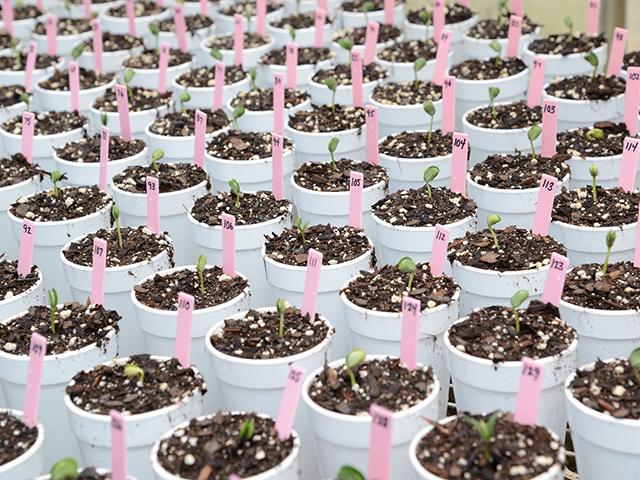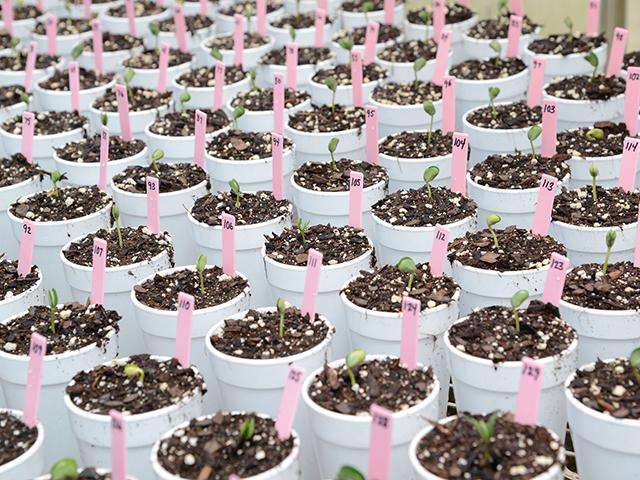Editors' Notebook
The Power of 'Magic Beans'
The classic fairy tale "Jack and the Beanstalk" tells the story of a poor widow and her son, Jack. With no money for food, the widow instructs Jack to sell the family's only cow. On the way to the market, he meets a man who offers him a handful of "magic beans" in trade for the animal.
Jack accepts, but when he returns home, his mother is furious at his seemingly foolish choice. She throws the beans out the window and sends him to bed without supper.
The next morning, Jack discovers a huge beanstalk reaching up into the clouds has grown from the magic beans.
He climbs the beanstalk to discover a castle where an unfriendly giant lives. Jack learns that the giant possesses items once stolen from his family, including a bag of gold, a goose that lays golden eggs and a magic golden harp that plays and sings by itself. He outwits the giant, retrieving the items. When the giant attempts to chase him down the beanstalk, Jack chops it down, and the giant falls to his death. Jack and his mother live happily ever after.
"Magic beans" such as those of fairy tales might not exist, but modern seeds certainly do possess their own superpowers.
P[L1] D[0x0] M[300x250] OOP[F] ADUNIT[] T[]
In the special September 2023 edition of Progressive Farmer, and starting today in our series called "Seed Solutions" on DTN, we examine many aspects that contribute to the success of today's seed offerings.
Today, in our first story of the series, we take a closer look at the role of the USDA Agricultural Research Service National Laboratory for Genetic Resources Preservation and how the National Plant Germplasm System safeguards the world's crops.
You can see the start of the series, "National Seed Bank Provides Future Security," at https://www.dtnpf.com/….
Turning back to seed superpowers, consider this: From 1866 to 1899, corn yields in the United States averaged 26 bushels per acre (bpa). That yield remained relatively constant until the advent of hybrid corn and its widespread adoption throughout the 1930s. Since then, average U.S. corn yields have increased about 2 bushels per year. In its August Crop Production report, USDA forecast the 2023 average yield at 175.1 bpa -- a more than sixfold increase in fewer than 90 years.
While perhaps not as dramatic, yield growth also has been witnessed in soybean production. The average U.S. soybean yield has increased from less than 25 bpa in 1960 to more than 50 bpa in recent years. For 2023, USDA forecast an average national yield of 50.9 bpa in its August report.
So, where does the "magic" come from that has led to this surge in agricultural output? Certainly, a greater overall understanding of agronomy and the widespread adoption of crop-protection products have played a significant role. But there's no question that decades of public investment made in crop research through the USDA Agricultural Research Service (ARS) and land-grant universities has contributed greatly to seed innovation.
However, funding for this type of research has been on the decline in recent years, prompting concern for the future of public seed breeding and this steady drumbeat underlying crop improvement. Fortunately, commercial seed companies have filled the research gap, germinating advances in biotechnology and other crop-breeding tools and technologies.
Since the turn of the 21st century, unlocking secrets hidden within crop genomes has advanced abilities to produce crops with greater tolerance to environmental stresses and stronger resistance to pests and diseases. New tools, such as CRISPR gene editing and machine learning, allow plant geneticists to deliver new hybrids and varieties with improved traits to farmers faster than ever before. But, without concerted effort to maintain and preserve genetic diversity, will the genes required to combat emerging and future threats be available when needed? Or will they be lost before we even learn we need them?
If the 2023 growing season has demonstrated anything, it's that resilience underpins seed genetics. Whether planted into cold, wet or dry soils, crops were determined to emerge. And, once they felt the warmth of the sun, they were intent on withstanding most of the challenges they faced.
Do we have "magic beans?" We just might.
Jason Jenkins can be reached at jason.jenkins@dtn.com
Follow him on X, formerly Twitter, @JasonJenkinsDTN
(c) Copyright 2023 DTN, LLC. All rights reserved.






Comments
To comment, please Log In or Join our Community .